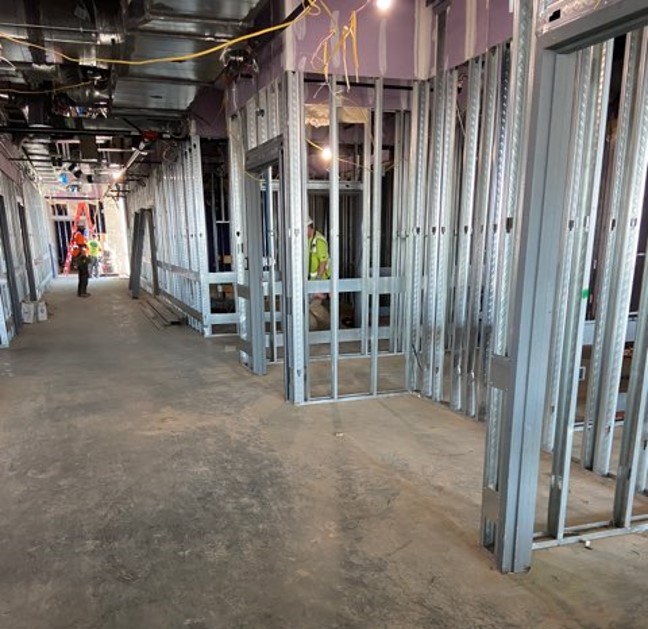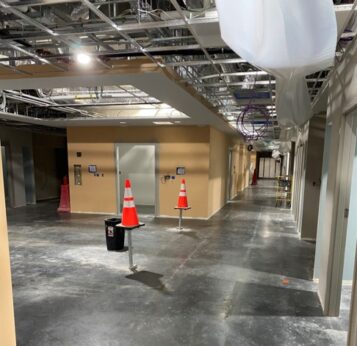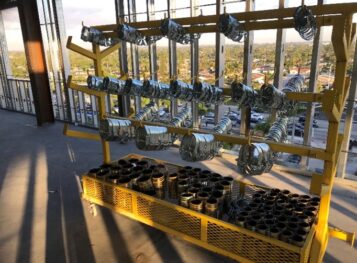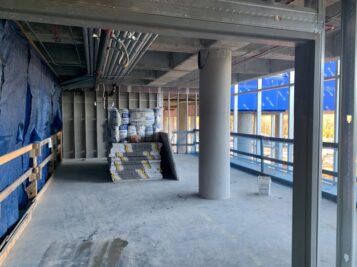
A fresh look at material handling operations
By Ken Cornell
Did you know that evaluating material handling operations may provide the key to a more productive, safe and profitable jobsite? And superintendents who embrace change on this front give their companies a competitive advantage.
Evolution of safety practices
Since the establishment of OSHA in the 1970s, safety protocols and standards have continued to evolve. In fact, the pace of change has rapidly increased with the consistent introduction of new technology and processes that are pushing the industry forward in terms of field operations. Typically, slower to adopt change, construction organizations and field workers are now embracing new ways of performing work and evaluating their safety practices to apply more forward-thinking alternatives. Many of these modern practices stem from the adoption of Lean principles, now becoming more commonly integrated into daily field operations.
What does Lean have to do with materials handling?
One specific application of Lean principles is in materials handling, where applying the 5S improves productivity, safety and overall project performance. This revolutionary approach requires a complete mindset shift on behalf of superintendents and trade partners, many of whom are set in their ways. 5S requires intentional thought and action and resisting the desire to revert to old behavior.
What is 5S and how can it help?
The 5S method is a system for organizing spaces so work can be performed efficiently, effectively and safely. It is centered around five steps: sort, straighten, shine, standardize and sustain. Essentially, by putting everything where it belongs and keeping workspaces clean, work becomes more productive, and workers are less at risk for injury.
- Sort: In this step, superintendents and trade partners sort items based on the materials needed now vs. later. To reduce the chaos, it is important to limit what you keep onsite. Focus on what is needed now, and schedule just in time deliveries to eliminate the need to inventory, store and move items during the course of work. As much as possible, keep five days’ worth of materials onsite.
- Straighten: Like the old proverb says, “A place for everything and everything in its place.” Work with teams to label where items should go. Materials used most often should be easily accessible. Items that need to be mobile should be placed on wheels, and a simple system should be implemented to identify when restocking is necessary.
- Shine: There is no question that having a clean site greatly reduces risks and projects a more positive image to visitors. To keep up with the amount of trash that sites produce, encourage teams to clean as they go. Implement a “nothing hits the ground” policy, and coach workers to put trash directly into rolling bins. Keep tools repaired, and have a way to indicate if tools need attention. The goal here is to keep dirt and debris from getting in the way. This is an all-hands-on deck approach that requires team accountability.
- Standardize: In this step, identify ways to make certain things uniform across the jobsite or, even better, at a company level. Standardize common tools and consumables, trailer layouts, forms, processes, filing systems and signage. When you move from jobsite to jobsite, trade partners and other field operations personnel become accustomed to how to work.
- Sustain: One of the hardest parts of implementing this program is maintaining it day in and day out. Superintendents, as with anyone, naturally revert to old tendencies, so assign someone to be responsible for keeping everything in order. Work as a team to make 5S a habit by having consistent assessments. Set examples for how to operate. Do not walk past a mess or a problem — address it. Make workplace visual so that if something is out of place, it is easy to identify and when new materials are delivered, put them where they should go.
When you think about materials handling through the years, you may have applied parts of this process. But to truly get the benefit, you have to put all of these steps in place and make sure they work together. It’s true what they say, “You get what you accept.”
Superintendents driving change
This is a new era. Superintendents young and old are seeking more productive, safer ways to perform work and are embracing change. As project leaders, they are in a unique position to drive change, helping companies and the industry adopt strategies to revolutionize construction. Often, superintendents are serving as coaches to those implementing 5S at the project level. By simply exploring materials handling operations, they can save countless manhours and reduce the risk for injuries. Practicing this thinking across the company can account for significant savings when you think of material inventory, lost worktime incidents and other costly areas. Bottom line — a safer, more productive jobsite means more profitability. And as in most cases, being an early adopter means giving your company a competitive advantage.
Ken Cornell is a general superintendent at JE Dunn Construction.







 Join our thriving community of 70,000+ superintendents and trade professionals on LinkedIn!
Join our thriving community of 70,000+ superintendents and trade professionals on LinkedIn! Search our job board for your next opportunity, or post an opening within your company.
Search our job board for your next opportunity, or post an opening within your company. Subscribe to our monthly
Construction Superintendent eNewsletter and stay current.
Subscribe to our monthly
Construction Superintendent eNewsletter and stay current.